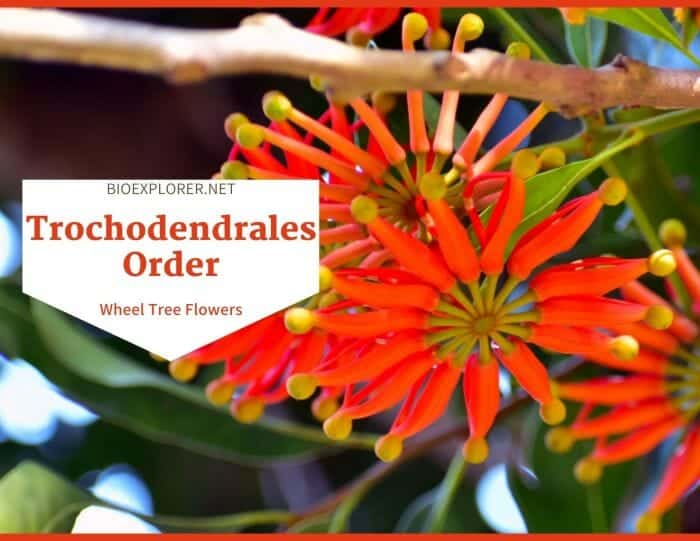
Trochodendrales, under Division Magnoliophyta, is a small order of angiosperms with members distributed in Southeast Asia. The Trochodendrales trees are primitive with simple leaves, no vessels, small or no stipules, and reduced perianth.
The Trochodendrales flowers are bisexual and pollinated via wind (Tetracentron) or insects (Trochodendron). The wheel tree belongs to the order Trochodendrales.
Table of Contents
Trochodendrales Families
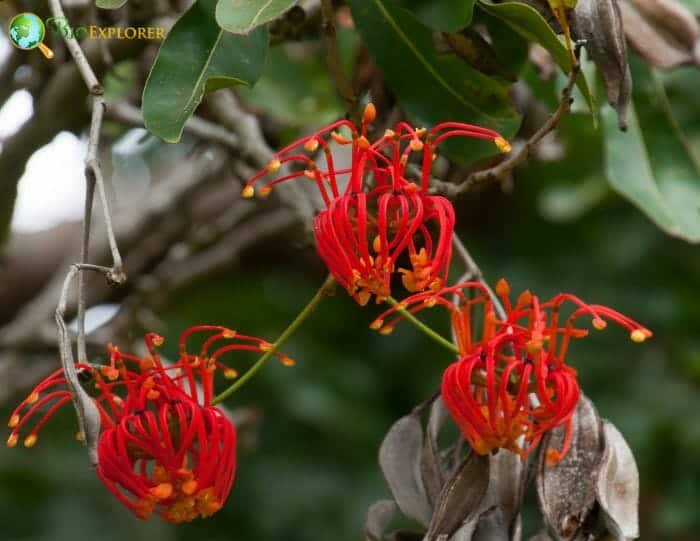
Order Trochodendrales consists of only 1 family, 2 genera, and 2 species[1]. This group is positioned near advanced Eucotyledon’s base, providing linkage between advanced Eudicotyledons and the more primitive angiosperms. The sole family of Trochodendrales is Trochodendraceae, with Trochodendron and Tetracentron as the two genera. Each genus possesses a single species.
![]()
Trochodendrales Distribution
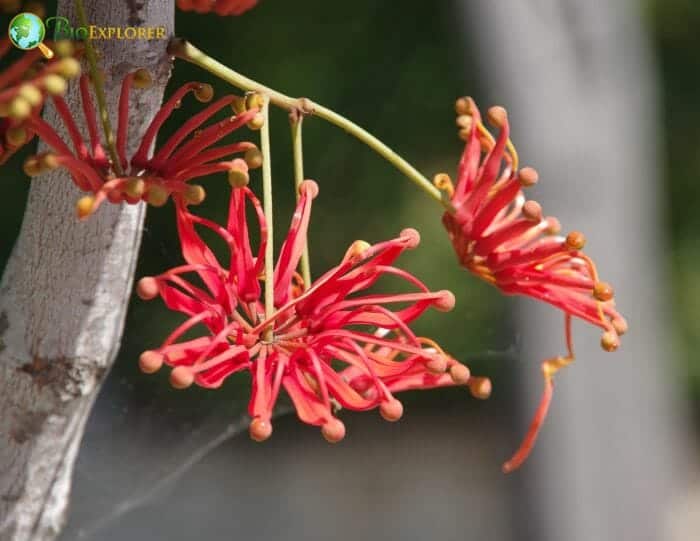
The living species of Trochodendrales are scattered in Southeast Asia.
- The Trochodendron[2] is commonly found in Taiwan and rarely in Japan. On the other hand, the species of Tetracentron are distributed in China and Nepal. This species is endemic and endangered.
- Researchers stated[3] that the genome of Tetracentron sinensi will better understand the evolution of eudicots and the vessel elements’ formation.
![]()
Trochodendrales Characteristics
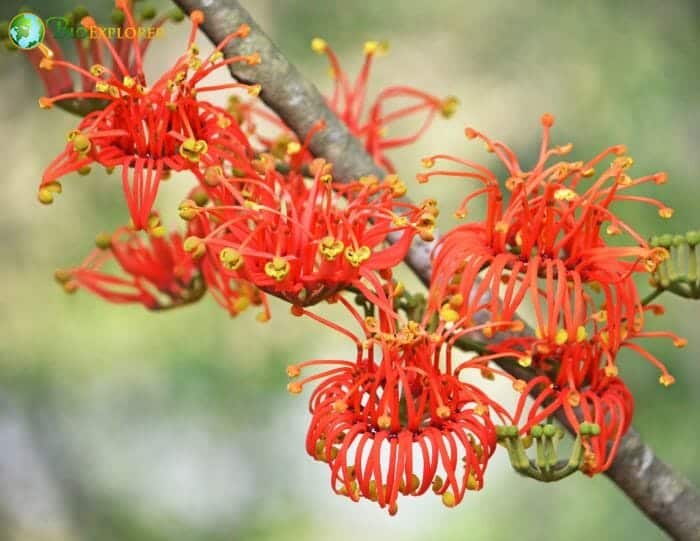
- Plant type: Members of Trochodendrales are shrubs to trees.
- Stem: The trees are primitive and characterized by the absence of vessels.
- Leaves: The simple leaves are spiral with serrated margins. Some members do not have stipules. If stipules are present, it is small and joined (adnate) with the petiole.
- Flowers and inflorescences: Flowers are yellowish with aggregates of raceme-like or spikes. Trochodendrales flowers are bisexual and radially symmetrical (actinomorphicWhat is actinomorphic?A characteristic of the flower exhibiting radial symmetry such as starfish or Daisy flower; capable of being bisected into identical halves along more than one axis, forming mirror images. Opposite is Zygomorphic.) or dissymmetric.
- Sepals and petals:The flower’s perianth is reduced. The flowers have 0 petals and 0 or 4 sepals.
- Stamens and carpels: The stamens are 4 or 40-70. The carpels are 4-17; barely sealed carpels fused partially together. The styles are free.
- Ovary and fruit: The ovary is partly-inferior, and the fruit is a capsule.
- Seeds: The seeds are small with abundant endospermWhat is endosperm?An embryonic nutritive tissue formed during double fertilization by the fusion of a sperm with the polar nuclei.. The embryo is tiny and straight.
![]()
Trochodendrales Flowers and Reproduction
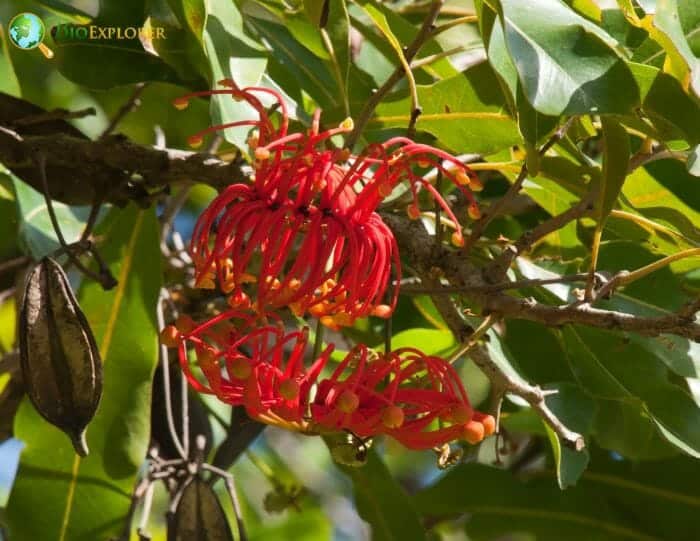
Flowers of Tetracentron are tiny and yellowish-green in slim pendulous spikes. They are bisexual and stalkless. The flowers do not have petals (apetalous) but do have 4 sepals, 4 stamens, and 4 carpels. The flowers blossom during June-July. Pollination of Tetracentron species is via wind.
Trochodendron aralioide is also called Wheel Tree. When the species is flowering, the stamens (70) spread to resemble the wheel’s spokes, hence the name. The star-shaped flowers are greenish in clusters. This species does not have sepals and petals. The flowers can be bisexual or male-only. There are 5-11 0r more carpels partly fused in the bisexual trees. The flowers of Trochodendron are pollinated by insects.
![]()
Trochodendrales Genera Differences
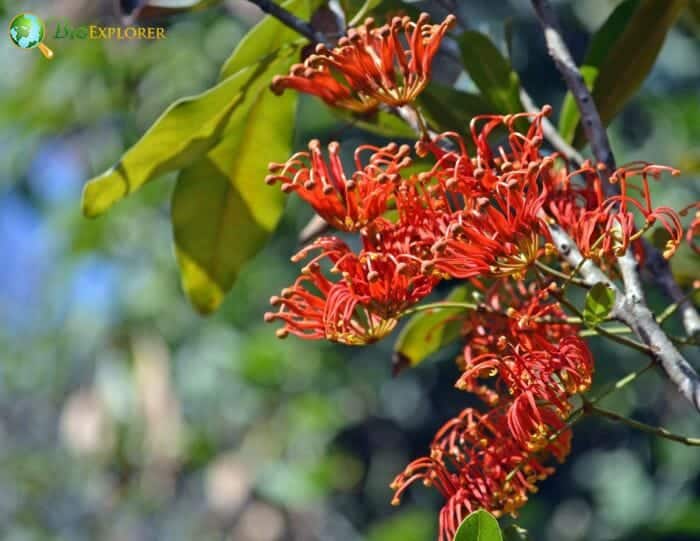
Tetracentron
- Members are deciduous trees.
- The leaves are simple and two-ranked. The margin is serrated, and the lamina has palmate venation. The base of the leaf is broad.
- The stipules are present.
- Tetracentron has secretory idioblasts.
- The flowers are sessile with axillary, pendulous, or spicate inflorescences.
- Perianth has 0 petals and 4 sepals.
- Tetracentron has superior gynoecium.
![]()
Trochodendron
- Members are evergreen shrub to tree.
- The leaves are spiral. The lamina margin is crenulate with subpinnate venation.
- The stipules ar absent.
- Trochodendron has big, branched, sclerenchymatous idioblasts.
- The inflorescence is terminal.
- Flowers do not have sepals and petals.
- Trochodendron has slightly semi-inferior gynoecium.
![]()
Trochodendrales Example Species
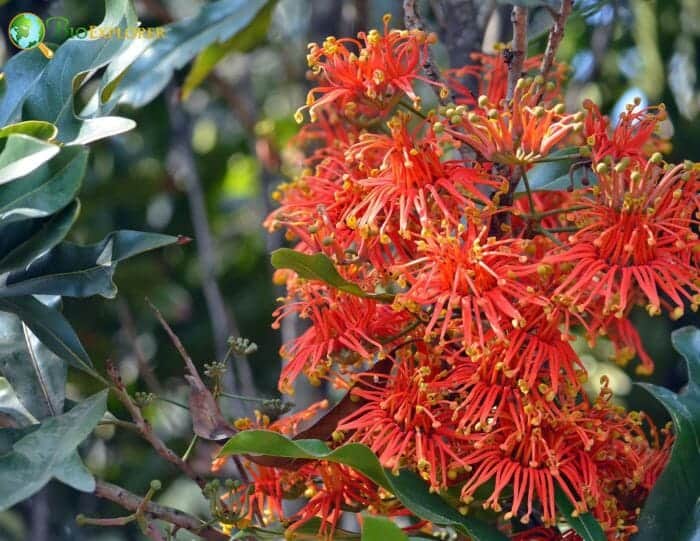
Trochodendraceae only has 2 genera with a species each.
- Tetracentron – A study on Tetracentron bark[4] shows the presence of new glycosides from the T. sinense. These compounds showed inhibitory activities significantly when tested against human leukemia cells in vitro.
- Wheel tree – The Trochodendron is sometimes grown for ornamental purposes. Additionally, they also have medicinal benefits[5].
![]()










